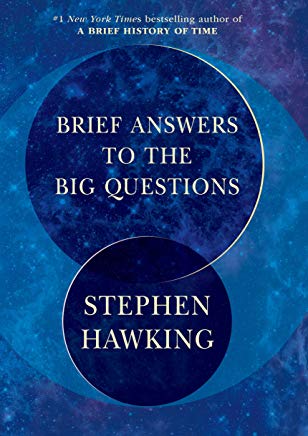History |
Stephen Hawking: Brief Answers to the Big Questions
By
Published: Oct 29, 2018
Category:
History
Stephen Hawking was born on the 300th anniversary of Galileo’s death. He died on March 14, 2018, the 199th anniversary of Einstein’s birth. In the 76 years of his life, he became the best known scientist in the world.
There were two reasons: Hawking was wheelchair-bound due to motor neuron disease. He was diagnosed when he was 21, and given a life expectancy of two years. He failed to die on schedule; instead, he rolled out one discovery after another. In later life, even after he lost the power of speech, he still communicated, eventually using a single cheek muscle. The scientist as media hero? In spades.
The other reason was his 1988 bestseller, “A Brief History of Time,” a guided tour of space, black holes, the uncertainty principle and the expanding universe that was non-technical enough to sell more than 10 million copies in 20 years. [To buy the paperback of “A Brief History of Time,” click here. For the Kindle edition, click here.]
At the end of his life, he produced a summing up.
Here’s the set up:
I have led an extraordinary life on this planet, while at the same time traveling across the universe by using my mind and the laws of physics. I have been to the furthest reaches of our galaxy, traveled into a black hole and gone back to the beginning of time.
On Earth, I have experienced highs and lows, turbulence and peace, success and suffering. I have been rich and poor, I have been able-bodied and disabled. I have been praised and criticized, but never ignored. I have been enormously privileged, through my work, in being able to contribute to our understanding of the universe.
I want to share my excitement about these big questions and my enthusiasm about this quest.
And that is what he does in “Brief Answers to the Big Questions,” a 211-page tour of his greatest hits — and what they suggest about our lives, the planet, and the universe. [To buy the book from Amazon, click here. For the Kindle edition, click here.]
The questions are indeed big:
Is there a God?
How did it all begin?
What is inside a black hole?
Can we predict the future?
Is time travel possible?
Will we survive on Earth?
Is there other intelligent life in the universe?
Should we colonize space?
Will artificial intelligence outsmart us?
How do we shape the future?
The answer to the first question is simple and blunt.
“Do I have faith?” he writes. “We are free to believe in what we want, and it’s my view that there is no God. No one created the universe, and no one directs our fate. If there were such a God, I would love to ask, however did he think of anything as complicated as M-theory in eleven dimensions.”
Other answers are so much more challenging that you’d have to be considerably brighter than me to grok them:
Suppose there was no gravity and space-time was completely flat. This would be like a completely featureless desert. Such a place has two types of symmetry. The first is called translation symmetry. If you moved from one point in the desert to another, you would not notice any change. The second symmetry is rotation symmetry. If you stood somewhere in the desert and started to turn around, you would again not notice any difference in what you saw. These symmetries are also found in “flat” space-time, the space-time one finds in the absence of any matter.
If one put something into this desert, these symmetries would be broken. Suppose there was a mountain, an oasis and some cacti in the desert, it would look different in different places and in different directions. The same is true of space-time. If one puts objects into a space-time, the translational and rotational symmetries get broken. And introducing objects into a space-time is what produces gravity.
A black hole is a region of space-time where gravity is strong, space-time is violently distorted and so one expects its symmetries to be broken. However, as one moves away from the black hole, the curvature of space-time gets less and less. Very far away from the black hole, space-time looks very much like flat space-time.
Ok, is the earth doomed? Possibly. But then there is science: “The future will depend on science and technology more than ever before.”
And if they’re not adequate to overwhelm human selfishness and stupidity, there is still the glory of the effort.
Remember to look up at the stars and not at your feet. Try to make sense of what you see and wonder about what makes the universe exist. Be curious. And however difficult life may seem, there is always something you can do and succeed at. It matters that you don’t just give up. Unleash your imagination. Shape the future.
If you’re a science nerd — or know one — here’s a must-read.


